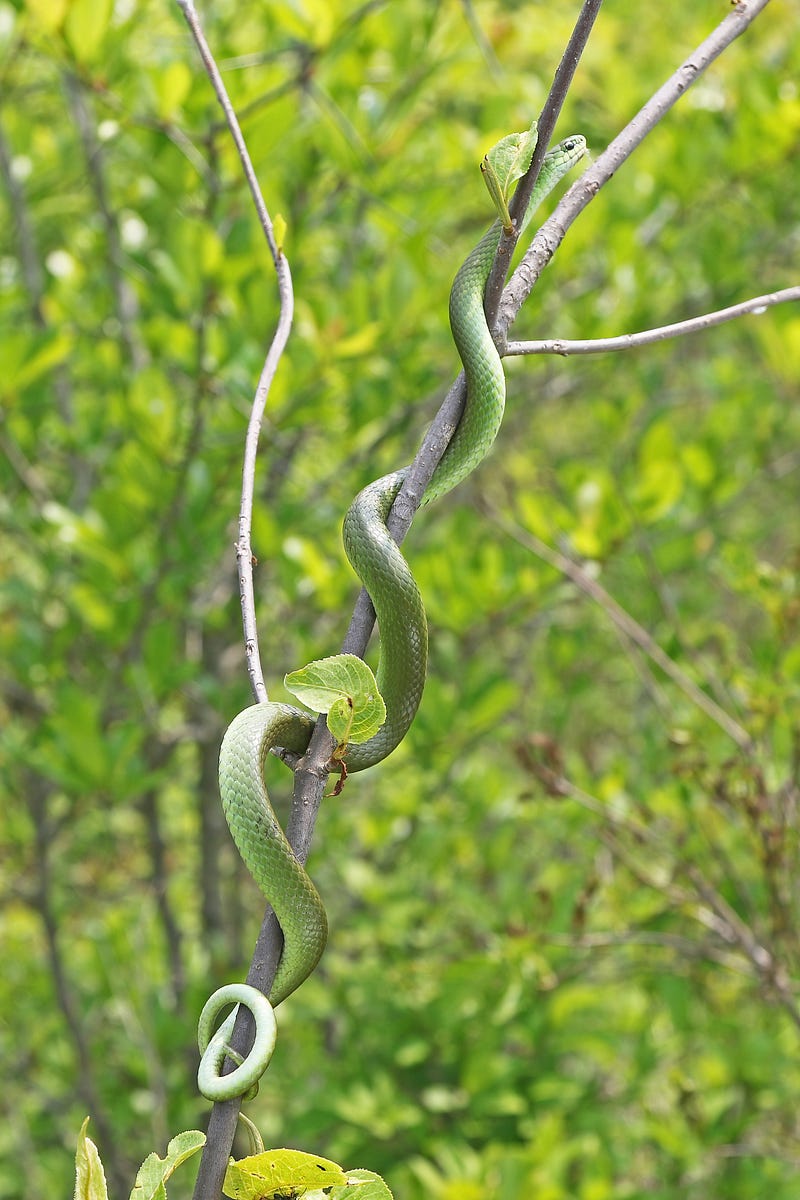Summit Metro Parks is proud to announce its participation in a Miami University study focused on understanding the genetic variation of green snake populations in Ohio. The study will allow researchers to estimate population size, heterozygosity (the condition where an individual has different versions of a particular gene, or alleles, at a specific location in their DNA), lineage and connectivity of green snake populations. Green snake populations have declined in recent years due to habitat loss and pesticide use.

Green snakes’ vibrant green hue and unique appearance set them apart from their reptilian counterparts. While most observations come from Northeast Ohio, these serpentine residents remain one of the most perplexing and least understood snakes in our state. Their health in this region offers crucial insights into the overall well-being of green snake populations across Ohio.

As of October, Summit Metro Parks has collected five green snake samples, with a goal of obtaining 10. Samples from three other snake species (common garter snakes, red-bellied snakes and Dekay’s brown snake) have also been collected, allowing researchers to compare genetic diversity among various local species.
This research transcends the study of a single species. As green snake populations become more isolated, genetic diversity may dwindle, adding another layer of concern to a species already threatened by habitat degradation and loss. Understanding their unique habitat preferences can offer clues to their protection.
Because green snakes are most active and conspicuous during spring and fall when their color blends seamlessly with the lush surroundings, this is when park biologists and trained volunteers conduct their search. They check coverboards in locations throughout the Metro Parks and conservation areas daily.

Did you know?
- The smooth green snake (Opheodrys vernalis) is aptly named for its smooth scales and bright green coloration, which helps it blend in with its natural habitat.
- Green snakes are relatively small, with adults typically reaching lengths of 1 to 2 feet.
- These snakes prefer a variety of habitats, including meadows, grasslands, wetlands and forested areas. They are frequently found in areas with ample vegetation for cover.
- They are primarily insectivores, their diet consisting mainly of insects, spiders, worms, caterpillars and snails.
- Green snakes are diurnal, meaning they are active during the day. They can often be seen basking in the sun to regulate their body temperature.
- They are known for their docile nature. They are not venomous and rarely pose a threat to humans. When threatened, they may release a foul-smelling musk as a defense mechanism.
- Green snakes mate in the late spring or summer. Females lay small clutches of eggs, typically ranging from four to six eggs. The eggs are usually deposited in hidden locations, such as rotting logs or leaf litter.
- The eggs usually hatch 4 to 23 days later. Snakelets (baby snakes) are independent at birth and become reproductively mature at 2 years of age.
The green snake study is led by Jason Bracken, who is working under Dr. Tereza Jezkova’s Global Change Biology Lab at Miami University with support from the Ohio Department of Natural Resources. Summit Metro Parks has conducted snake surveys for over a decade, frequently collaborating with universities to gather essential data within the Metro Parks to contribute to critical conservation information and education efforts.